In November, the flood water is gradually receding into the river, bringing with it many shrimps and fish, including the specialty linh fish. Fishermen in An Giang province living in upstream areas such as An Phu district, Tan Chau town, Chau Doc city focus on catching fish and shrimp...
This year, the Mekong Delta has a beautiful flood season, with water rising high into the fields, so people have a good harvest of fish and shrimp. However, amid the joy is worry due to unusual water levels...
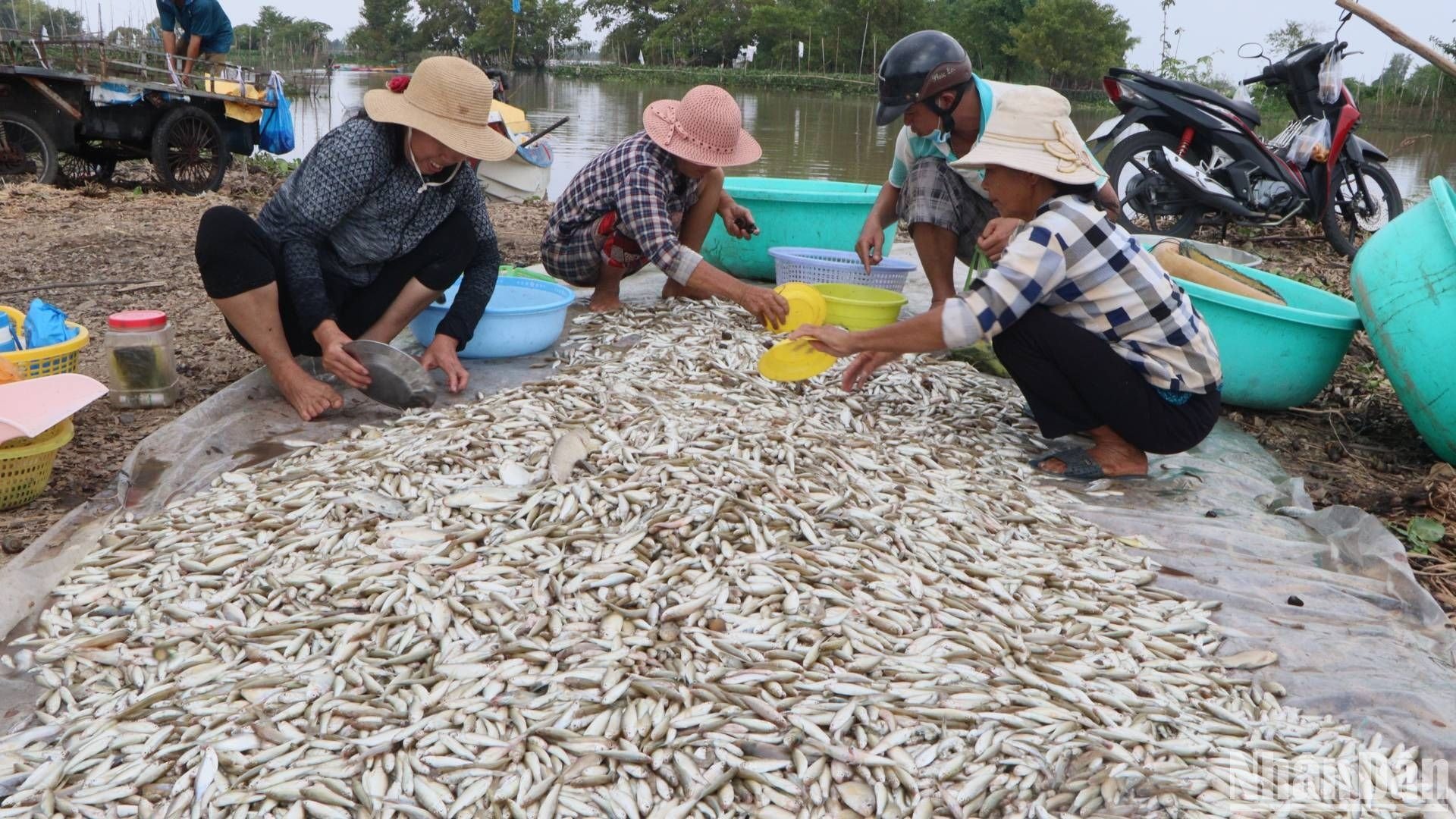
The fish season helps many people in the upstream area of An Giang have a stable income from fishing, catching a lot of linh fish and exploiting flood season products.
In November, the flood water is gradually receding into the river, bringing with it a lot of shrimp and fish. Fishermen in An Giang province living in upstream areas such as An Phu district, Tan Chau town, Chau Doc city concentrate on catching fish and shrimp...
Fishing season
This is the busiest time of the flood season, fishermen call it the season of fish going to the river. The most abundant are still linh fish. From the fields, fish swim to big rivers like Tien River, Hau River, Cai Vung River, Chau Doc River to go upstream to the Mekong River.
An Giang province is located at the source of the Tien and Hau rivers, so every year in July, water from the upper Mekong River floods the fields, bringing with it alluvium, shrimp and fish. By November, the water gradually recedes into the river. Fishermen use fishing gear to catch fish, some stand along the banks, some set traps, some cast nets, and some fish.
In Long Thanh ward, Tan Chau town (An Giang province), people and tourists are familiar with the scene of motorboats scooping fish with nets on the Tien River, called "pushing". This is a rather strange way of catching linh fish in the river area, only appearing in Tan Chau.
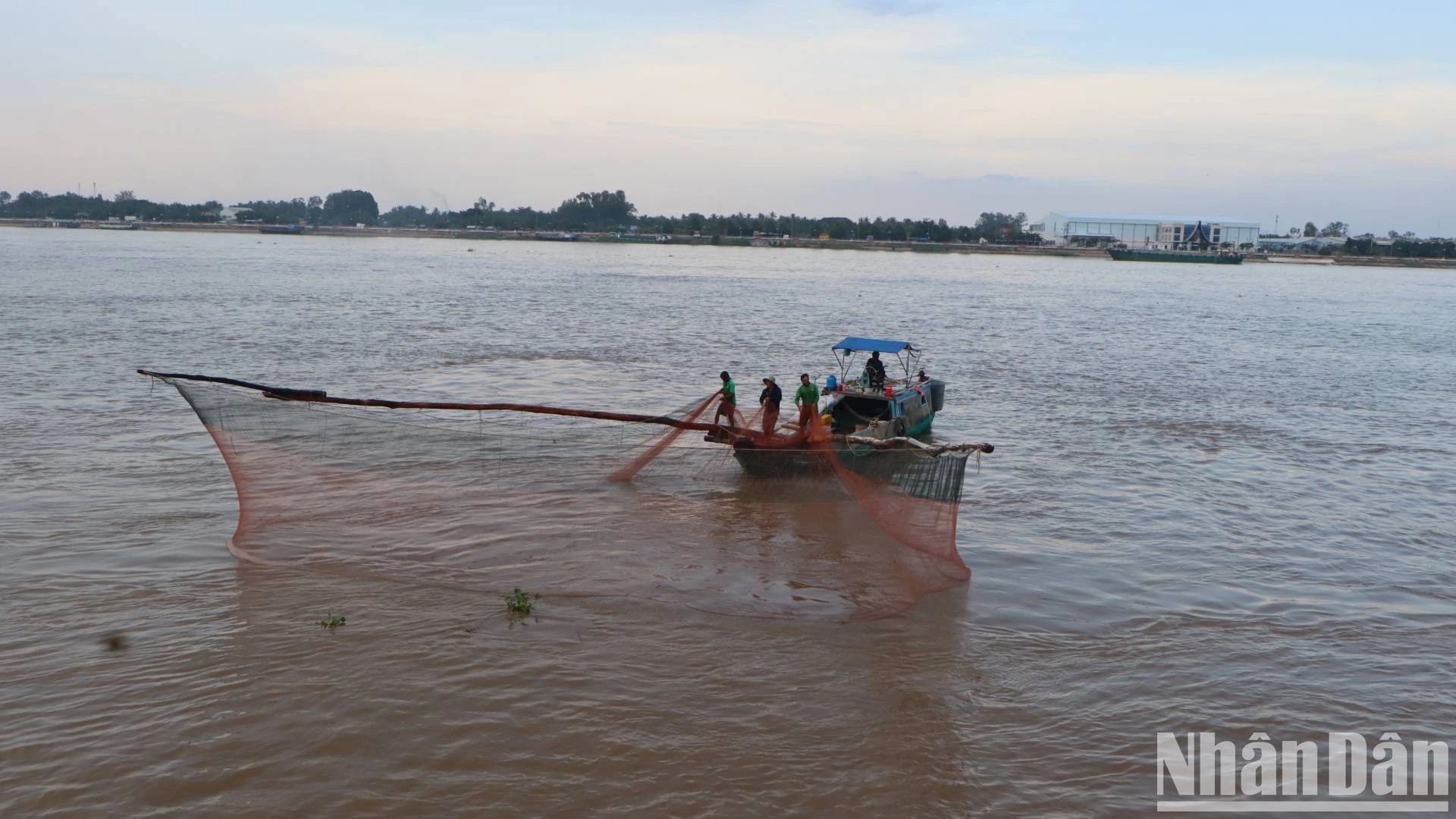
Catching linh fish - a specialty fish on the Tien River in Tan Chau town, An Giang province.
Motorboats running up and down the riverbank during the fishing season have become familiar to the residents of the riverside towns. Many people with free time often go to the embankment to watch the fishing.
Mr. Cum Van Xuyen, owner of a motorboat pulling fish, said that for more than 20 years he has made a living from this profession. The season for pulling fish is from October to November, then stops. The fish that stick to the pulling fish are big enough to make fish sauce.
According to Mr. Xuyen, pulling the net depends on machine power so it is not too tiring, but it is important to know how deep to drop the net to catch the fish.
Mr. Xuyen analyzed that the net has a depth of 15m but is usually dropped to a depth of 10m. If it is shallower or deeper, fish can still be caught, but very few, sometimes none at all.
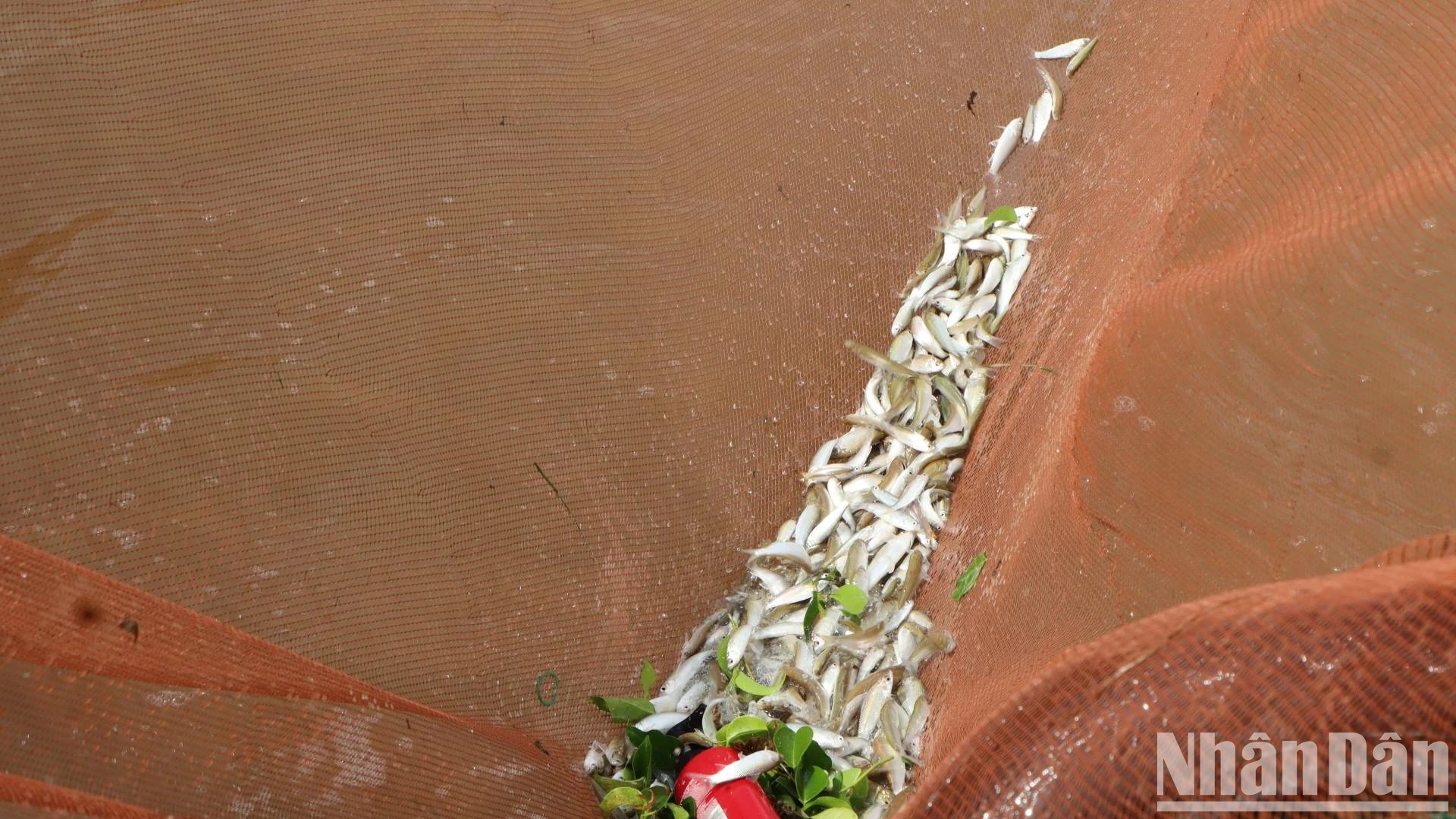
One day, fishermen in the upstream area of An Giang gathered to catch hundreds of kilos of linh fish.
We boarded the motorboat to watch Mr. Xuyen fishing. There were four people on the boat. Mr. Xuyen was the “chief engineer”, he steered the boat, looked at the water current to judge the depth and let the net drop. The other three people were responsible for dropping the net, pulling the net and scooping up the fish caught in the net.
The time to drop and pull the net is about 15 minutes. On the first drop, when slowly pulling the net up, the fish inside the net jumped around. Looking at the school of fish, Mr. Xuyen's eyes lit up, happily saying: "This net has a lot of fish, about 9kg. That's quite good because usually each net catches 3.4kg of fish."
Looking at the fish jumping in the net, they knew how many were caught. There were many fish so everyone was happy. Mr. Nguyen Van Thang held a big net to scoop the fish. More than 90% of the fish caught were linh fish, the rest were dolphins, sea perch, and scad… Mr. Thang quickly poured the fish into a large barrel containing 10kg of fish.
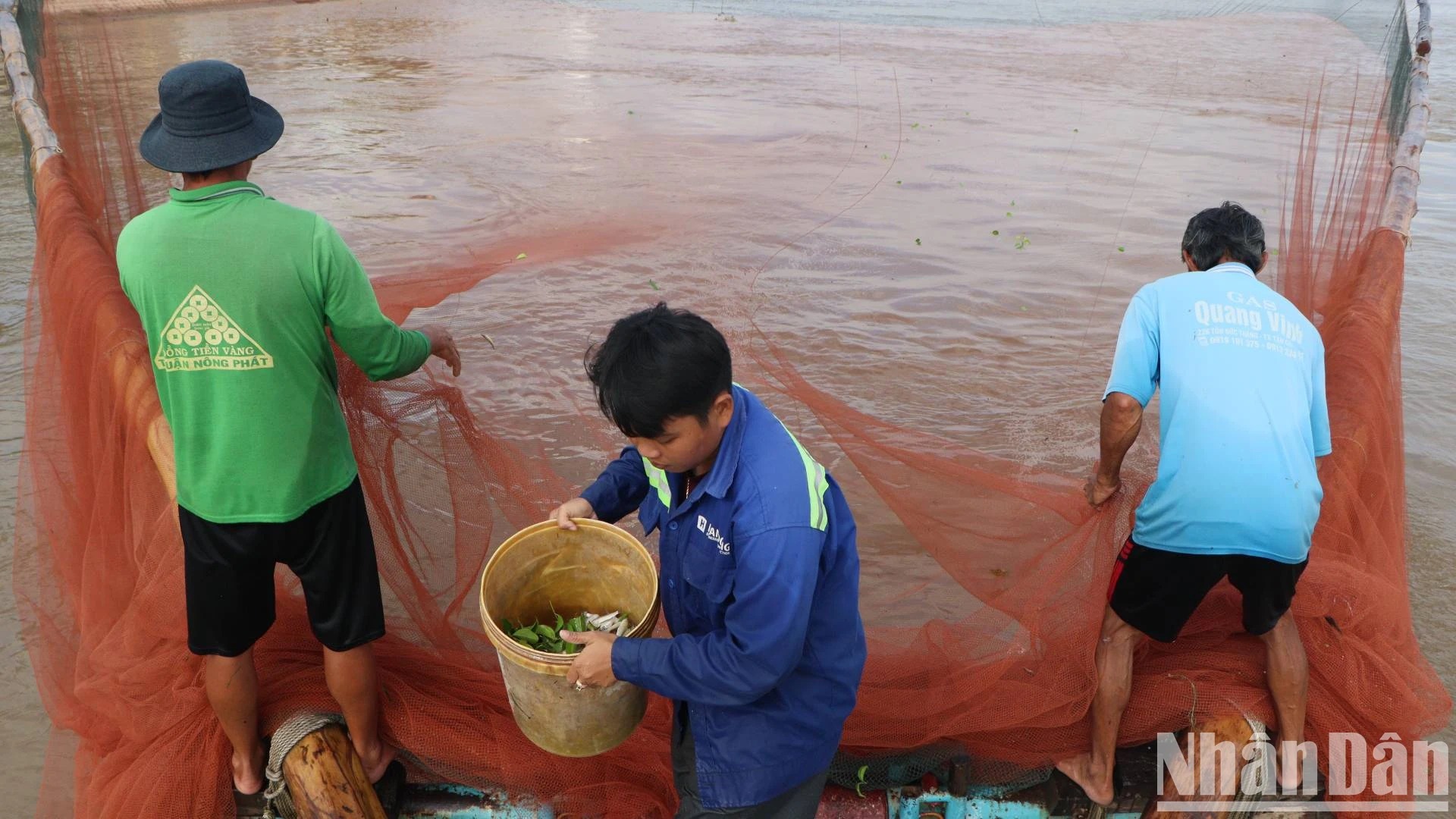
This plastic barrel can hold 10 kg of linh fish.
With 5 boxes of fish, Thang's group pulled ashore, handed the boxes to the merchant, drove the fish, and continued to follow the current to catch linh fish. In such a day, Thang's group fished for more than 8 hours.
Mr. Thang said he works for a living and is paid daily depending on the amount of fish. When there are few fish, he is paid 300,000 VND/day, and when there are many fish, he is paid 500,000 VND/day or more.
As long as the net is still wet, there is money. Pulling nets is different from normal net pulling and spreading because it can only be done for 2 months when the big fish go out to the river. After a fishing season, there are a few dozen million dong left over. Spend it frugally, save it for Tet shopping and the following months, because when the fishing season is over, roll up the nets and find another job.
Mr. Nguyen Van Thang
Mr. Xuyen estimates that he catches more than 200kg of fish a day, depending on the tide. Fresh fish are delivered to customers, and Mr. Xuyen also ships linh fish to fish sauce factories, linh fish sauce factories...
Happy, sad, the rising tide
There are many fish in the river, so along the canal banks, many people stand on the banks to catch fish. Mr. Nguyen Van Ve, living in Vinh Nguon ward, Chau Doc city, fishes on Vinh Te canal, said that every morning he brings his net to the canal bank to catch fish.
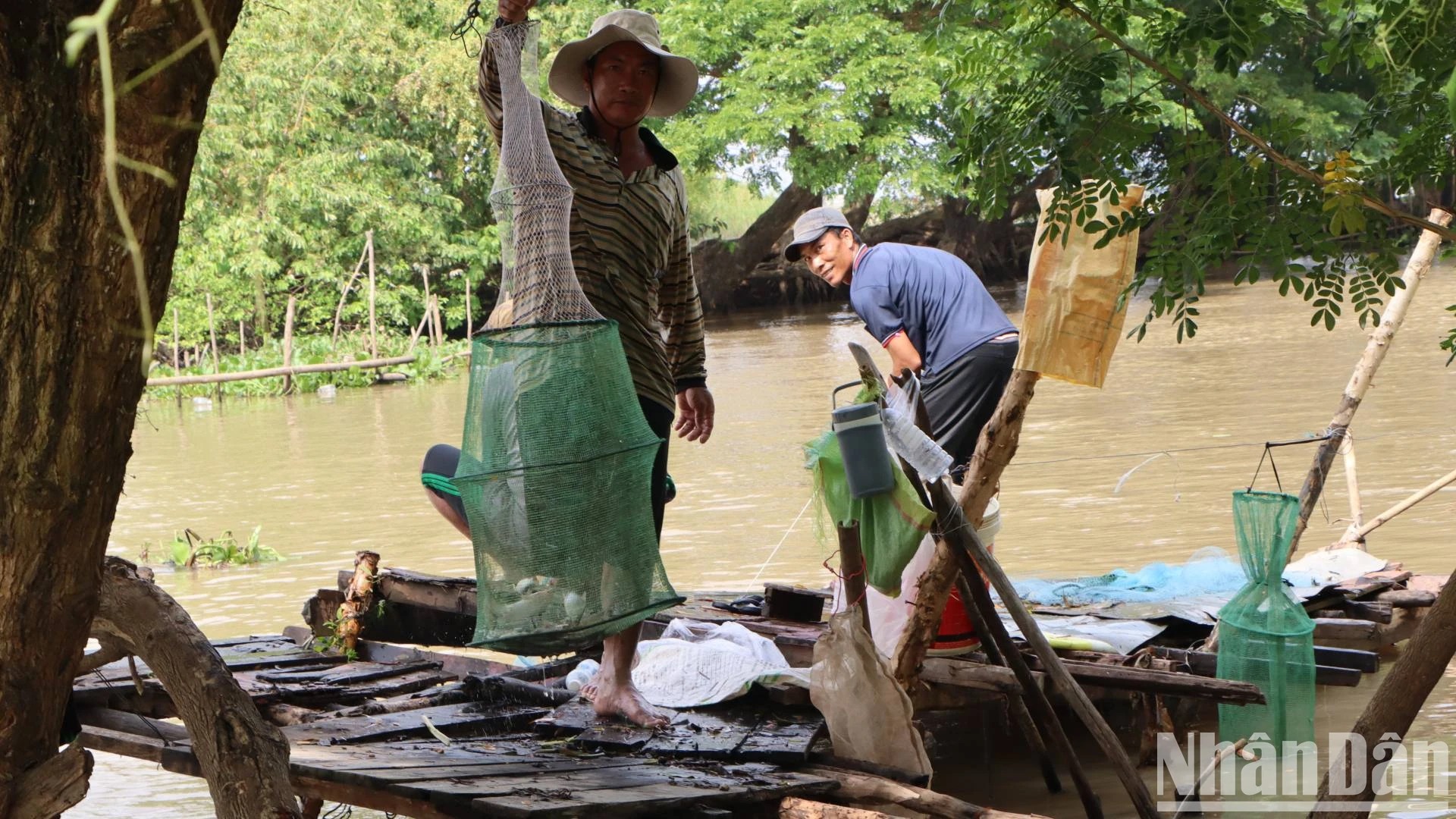
Many people in Chau Doc city (An Giang province) gather to fish in Vinh Te canal.
Mr. Ve only fishes in the morning, the fish caught are catfish, snakehead fish, freshwater dolphin, linh fish... Mr. Ve's family processes this fish into braised dishes, fried fish, soup, the rest is brought to the fish market to sell or dried to eat gradually.
The fish season has helped hundreds of non-fishermen in Chau Doc like Mr. Ve not have to spend money on fish sauce for meals. Having a lot of fish makes daily meals more delicious.
Walking along Vinh Te canal, the scene of fishing and fish trading is bustling. Fisherman Tran Van Hai, residing in Vinh Te commune, Chau Doc city, said that at this time, he and 4 members of his family go fishing together, in one night they can catch several hundred kilos of fish, most of which are linh fish. After deducting expenses, in one night they can earn more than 2 million VND.
The fish caught, Mr. Hai's group selected the big fish with high prices to sell at the fish market, the remaining linh fish and other small fish weighed and sold to the fishmongers, the price was from a few thousand VND to 11 thousand VND/kg. This month, the fish farms and fishmongers brought the fish in to sell to fish sauce factories and fish farming areas.
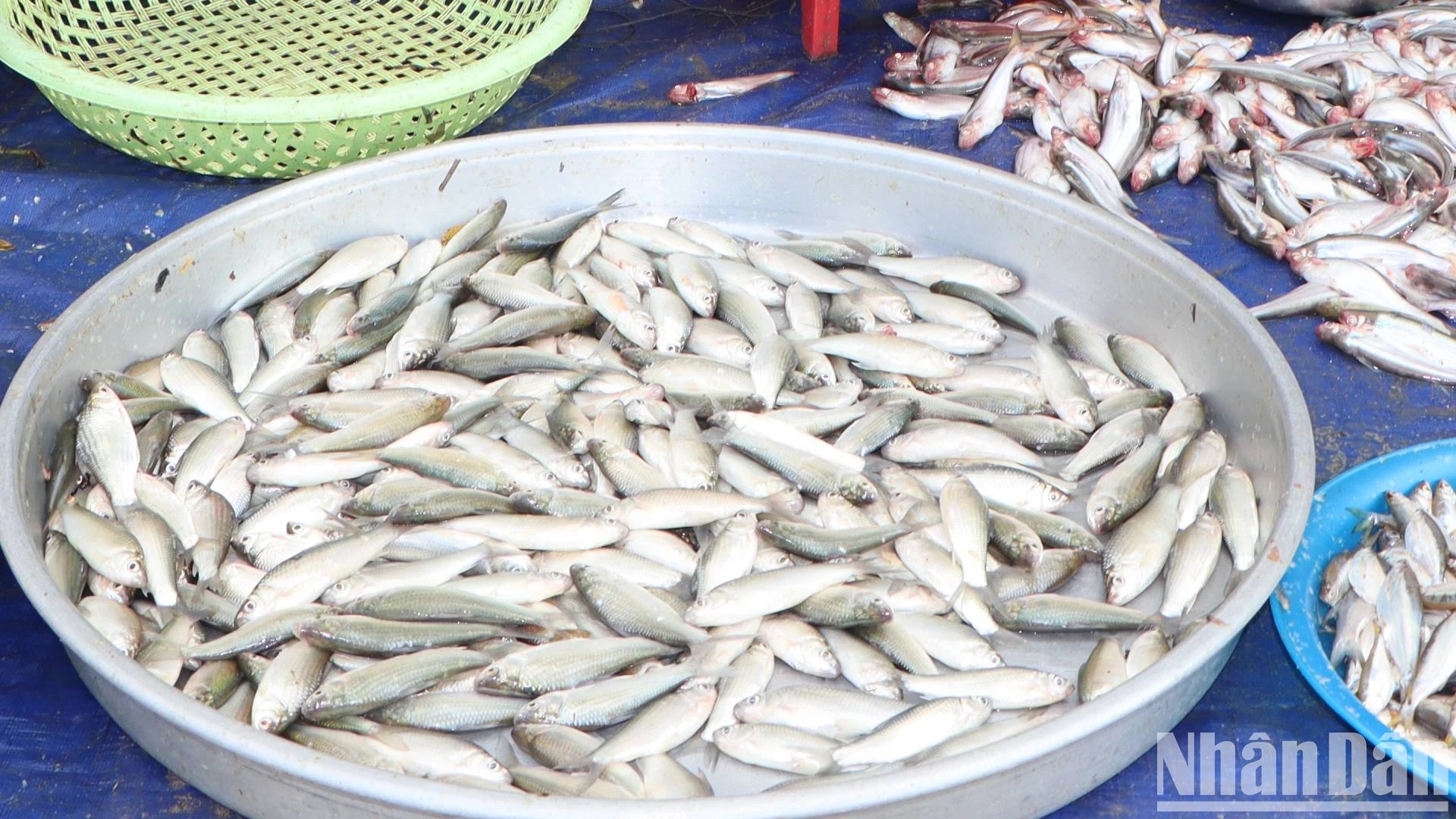
This season's linh fish are big enough to be used to make fish sauce or delicious sour soup.
Mr. Hai confided that in the last 4 years, there has been a good water season, so there are a lot of shrimp and fish. For fishermen and people in the upstream area, a good water season means the water level rises slowly, at a higher level than alarm level 1, and this year's flood has met these conditions.
But with the current water level, fishermen like Mr. Hai do not understand why the water level is so unusual.
Normally, in August, the water rises and slowly enters the fields. This year, the water came very late and did not enter the fields, so everyone was worried that there would be no flood season. Then, unexpectedly, in September, the water came back and flooded the fields.
Mr. Tran Van Hai
Fishermen like Mr. Hai compare, with the abnormality so this year is like having 2 flood seasons. The unusual water level has also affected the fish resources.
Pointing at the batch of linh fish, Mr. Hai said, normally linh fish are of the same size because they appear at the same time. But this year the water level is unusual so the linh fish are also different in size, some are as big as a thumb, then there are some as small as a middle finger, little finger. This is something very rare during linh fish catching season.
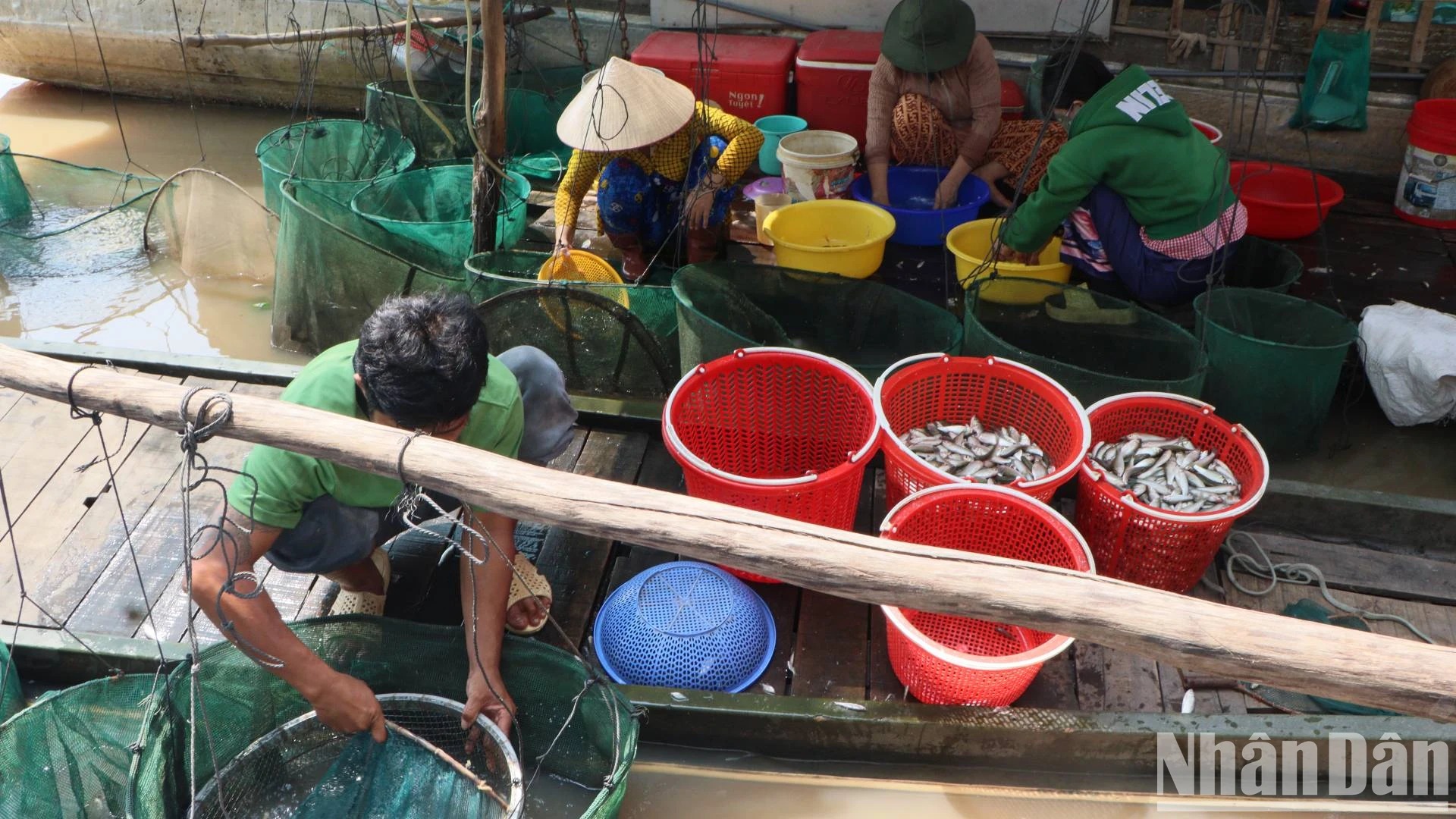
Linh fish season helps many people in An Giang have a good income.
Mr. Hai guessed that the unusual size of the linh fish was due to the fact that although the water level was low in August, the linh fish were lured back to spawn. In September, the water level rose faster and the linh fish followed again.
Because there are two flood seasons, the fish come back randomly and some give birth first, some give birth later, which leads to different sizes of young fish. For more than a few decades of living by fishing during flood season, fishermen like Mr. Hai have never seen a year with flood levels like this year.
In previous years, the flood season, whether low, medium or high, always entered the fields in the July cycle. Previously, the experience of the ancients was "3 years of small floods, 1 year of big floods", but from 2008 onwards, this experience could not be relied on.
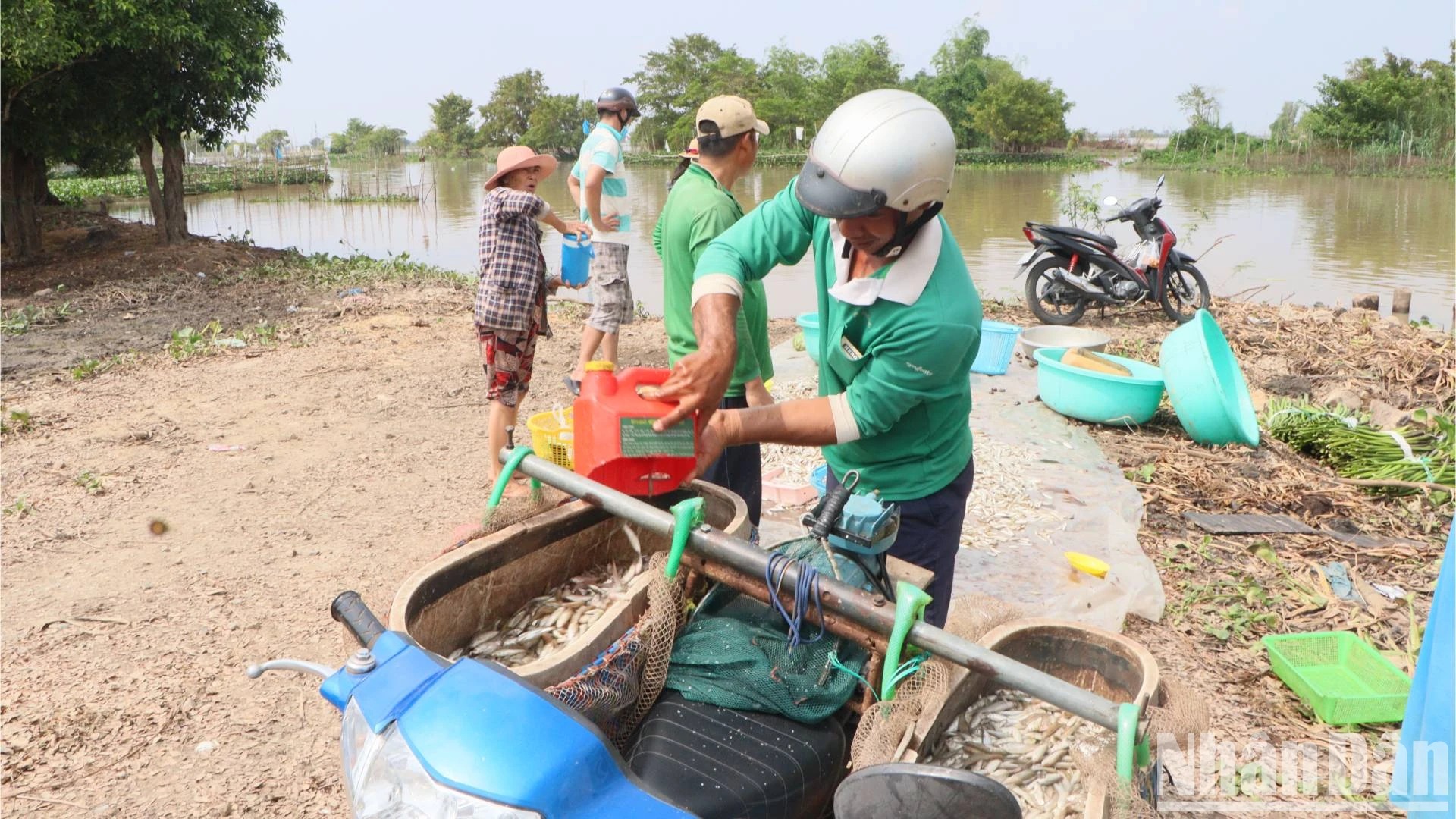
Linh fish is purchased by aquatic product facilities during the flood season in An Giang to make fish sauce or fish sauce.
This fishing season, Mr. Hai is happy because there are many fish, but he is also worried because this year's floods are quite unusual for people who know the river area like him. It is the worry of facing unpredictable flood seasons.
The flood season is a close friend of farmers. In the past, they relied on nature to predict which year the flood would be high and which year it would be low, but now, no one knows for sure because the water level is erratic.
And so, every time the flood season begins, thousands of people who depend on the water worry, wondering what the fishing season will be like?...
Source: https://danviet.vn/bat-la-liet-ca-linh-ca-dong-tom-song-mua-nuoc-noi-an-giang-sao-van-lo-con-nuoc-bat-thuong-20241121104251784.htm


![[Photo] Draft documents of the 14th Party Congress reach people at the Commune Cultural Post Offices](https://vphoto.vietnam.vn/thumb/1200x675/vietnam/resource/IMAGE/2025/10/28/1761642182616_du-thao-tai-tinh-hung-yen-4070-5235-jpg.webp)
![[Photo] National Assembly Chairman Tran Thanh Man received a delegation of the Social Democratic Party of Germany](https://vphoto.vietnam.vn/thumb/1200x675/vietnam/resource/IMAGE/2025/10/28/1761652150406_ndo_br_cover-3345-jpg.webp)


![[Photo] Flooding on the right side of the gate, entrance to Hue Citadel](https://vphoto.vietnam.vn/thumb/1200x675/vietnam/resource/IMAGE/2025/10/28/1761660788143_ndo_br_gen-h-z7165069467254-74c71c36d0cb396744b678cec80552f0-2-jpg.webp)

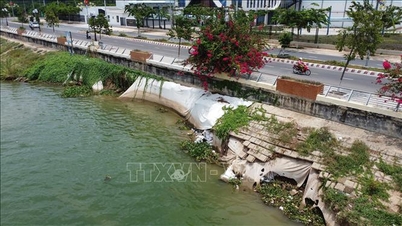

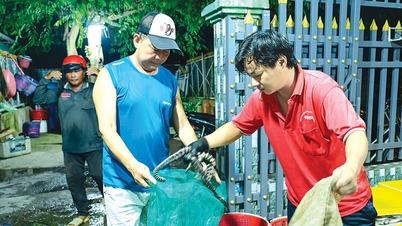



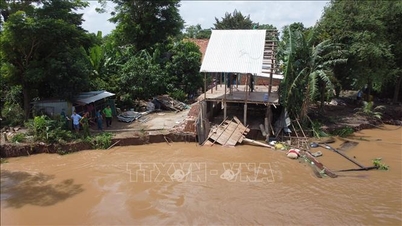


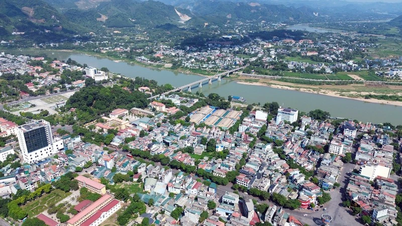

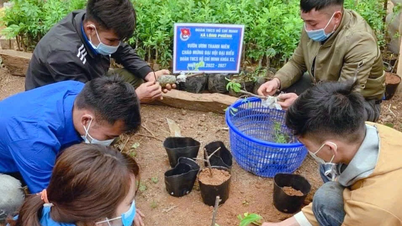

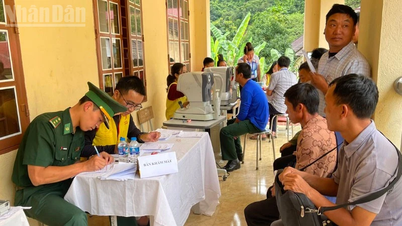


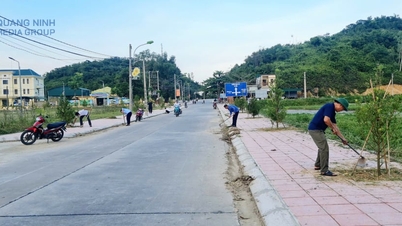











![[Photo] President Luong Cuong attends the 80th Anniversary of the Traditional Day of the Armed Forces of Military Region 3](https://vphoto.vietnam.vn/thumb/1200x675/vietnam/resource/IMAGE/2025/10/28/1761635584312_ndo_br_1-jpg.webp)






































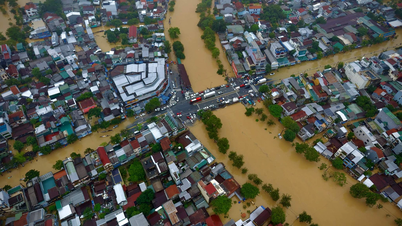



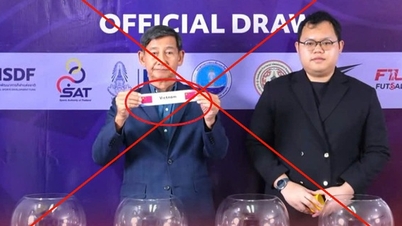










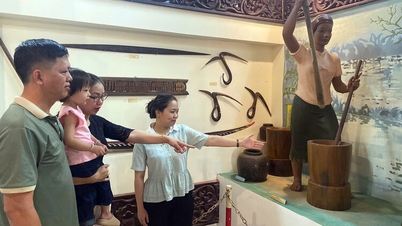
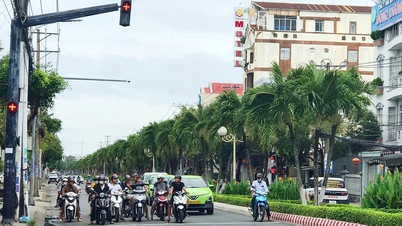
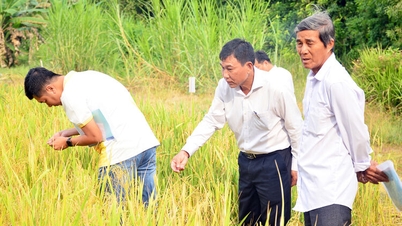

















Comment (0)